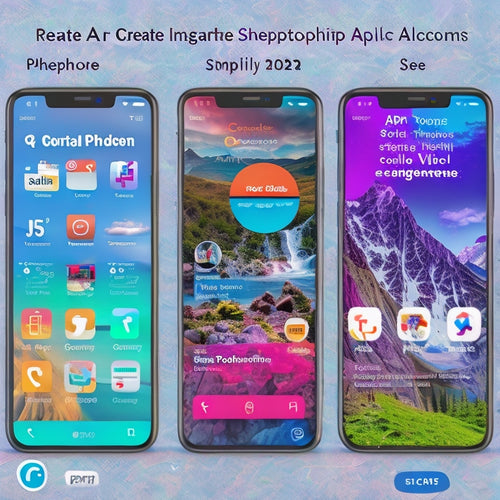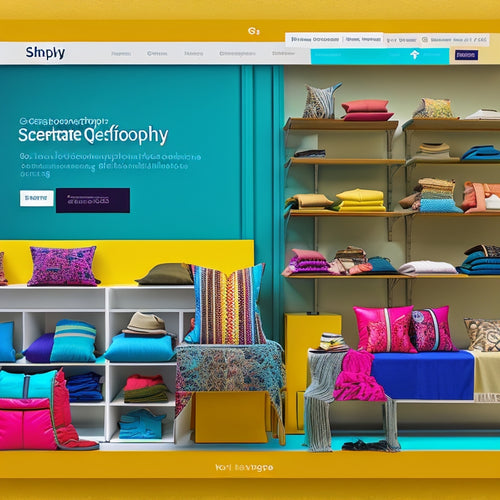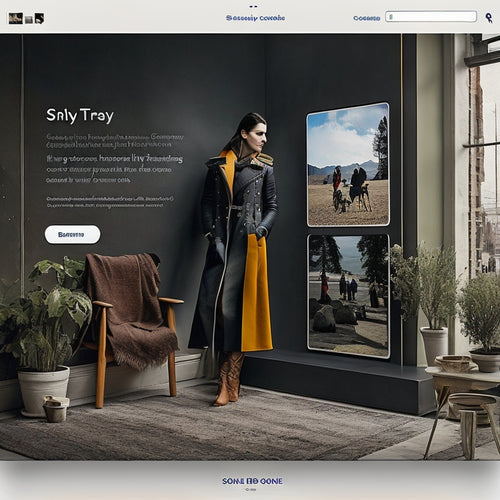
3 Proven Strategies to Retain Valued Customers Online
Share
You know how important it is to retain valued customers online, as up to 75% can slip away if you don't take deliberate steps. To prevent this, you can implement three proven strategies. First, foster emotional connections with customers through authenticity, transparency, and empathy. Next, personalize their experiences using customer data and insights to tailor your approach. Finally, reward their loyalty strategically with exclusive programs and offerings. By incorporating these strategies into your online business plan, you'll be well on your way to building a loyal customer base. Now, discover how to execute these strategies effectively to maximize your customer retention efforts.
Key Takeaways
• Foster emotional connections with customers online through authenticity, transparency, and empathy to retain loyal advocates.
• Personalize customer experiences by leveraging customer data and insights to deliver tailored experiences and build trust.
• Implement exclusive and personalized loyalty programs that offer rewards aligned with business goals to show value to customers.
• Engage with customers on social media in a personalized manner to build a loyal community for business growth.
• Host virtual events and offer exclusive experiences to valued customers to increase loyalty and retention.
Foster Emotional Connections Online
To build strong relationships with your customers online, you need to create an emotional connection with them, which can be achieved by being authentic, transparent, and empathetic in your digital interactions.
This connection is essential in retaining valued customers who'll become loyal advocates for your brand. One effective way to foster emotional connections is by hosting virtual events that provide exclusive experiences, such as webinars, workshops, or Q&A sessions. These events allow customers to interact with your brand in a more personal way, increasing feelings of trust and loyalty.
Another strategy is to engage with customers on social media, responding to their comments and messages in a timely and personalized manner. This shows that you value their feedback and care about their concerns. By doing so, you'll be able to build a loyal community that will drive business growth and success.
Personalize Customer Experiences Effectively
By leveraging customer data and insights, you can create tailored experiences that resonate with individual preferences, interests, and behaviors, further solidifying the emotional connections established through virtual events and social media engagement.
This personalization enables you to deliver value that's unique to each customer, increasing their loyalty and retention. For instance, you can offer tailored recommendations based on their purchase history, browsing behavior, or search queries. This not only saves them time but also makes them feel understood and valued.
Moreover, customized communication is key to personalization. You can address customers by name, use their preferred communication channels, and tailor your messaging to their specific needs and pain points. By doing so, you can create a sense of familiarity and build trust, which are essential for long-term relationships.
Reward Loyalty Strategically
Since retaining valued customers is all about fostering a sense of appreciation and reciprocity, strategically rewarding their loyalty becomes an essential step in the customer retention journey. You can't just assume they'll stick around; you need to show them you value their business.
This is where loyalty programs come in. By implementing a well-structured program, you can incentivize repeat purchases and encourage long-term loyalty. But don't just stop at any loyalty program; make it exclusive and personalized to your customers' needs. Offer them exclusive discounts, early access to new products, or premium services that make them feel special.
This won't only make them feel appreciated but also increase their loyalty to your brand. Remember, the key is to be strategic in your approach. Don't just reward loyalty for the sake of it; make sure it's aligned with your business goals and targets. By doing so, you'll be able to retain your valued customers and drive long-term growth for your business.
Frequently Asked Questions
How Often Should I Send Promotional Emails to Retain Customers' Interest?
You'll want to strike a balance with email frequency, as bombarding customers can lead to disengagement. Aim for 1-2 promotional emails monthly, packed with valuable content that fosters loyalty and keeps them coming back for more.
Can I Use Ai-Powered Chatbots for Effective Customer Support?
You can leverage AI-powered chatbots to provide 24/7 customer support, boosting chatbot efficiency and customer satisfaction, as they quickly resolve simple queries, freeing human agents to tackle complex issues that require empathy and personal touch.
What Is the Ideal Response Time for Resolving Customer Complaints Online?
"How quickly do you want to resolve customer complaints online - within minutes, hours, or days? Aim for a response time of under an hour to maximize customer satisfaction and maintain a strong online presence."
Do Customer Reviews Impact Online Customer Retention Rates Significantly?
You'll find that customer reviews greatly impact online customer retention rates, as they directly influence customer satisfaction, brand loyalty, and ultimately, your online reputation, making it important to address customer feedback promptly and effectively.
Can Social Media Influencers Help Retain Existing Customers Effectively?
You can leverage social media influencers to retain existing customers by collaborating on engaging content, making them brand ambassadors, and integrating them into loyalty programs, ultimately driving customer loyalty and retention.
Related Posts
-

Top Social Media Apps for Shopify in 2023: Boost Your Brand's Reach and Sales
This article explores the top social media apps for Shopify in 2023 and their significance in enhancing brand reach ...
-

How Many Product Options Can You Have in Shopify
This article examines the extent to which product options can be utilized in the Shopify platform. It explores the b...
-

Which Is the Best Email Marketing App for Shopify
This article aims to provide an objective analysis of the best email marketing app for Shopify. It will discuss the ...


